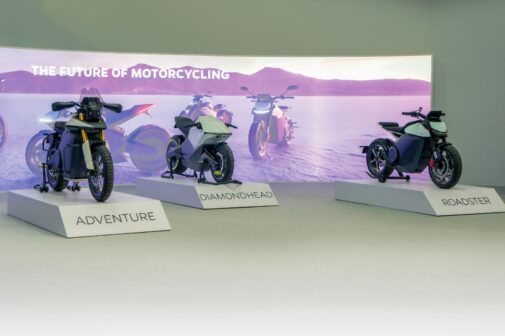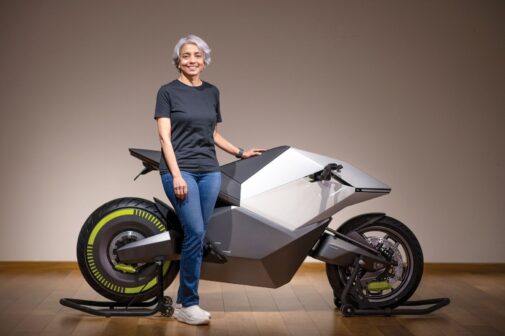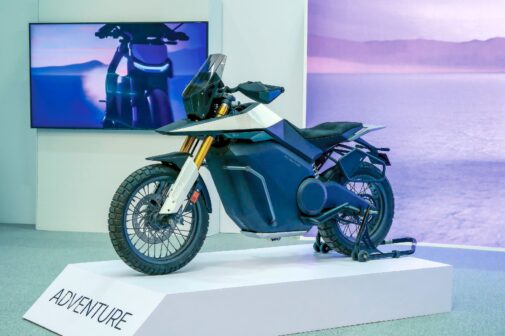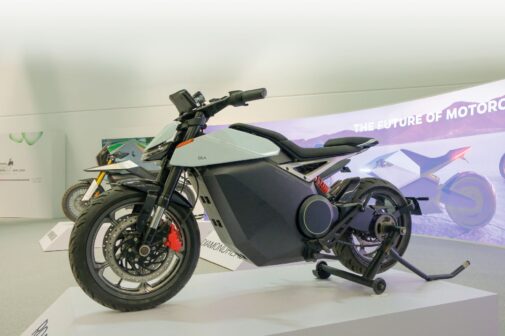In the auto industry, Ramkripa Ananthan is a Design leader in the Automotive industry. Her path from the corridors of the IDC School of Design to spearheading innovative initiatives as the design head at Ola Electric has been nothing short of
extraordinary. We had the honour of interviewing Kripa, where we discussed her remarkable career, her predictions for the future of automotive design, and the passion that keeps her going.
Motoring World: Can you share with us your design journey, starting from your college days at IDC School of Design?
Ramkripa Ananthan: One thing that stands out from my time at IDC–the very first day, our HOD told us about the importance of ‘unlearning’; at all times, being able to get rid of preconceived notions and being receptive to input. I would like to think that I learnt those lessons well and am putting them to good use in these exciting times when a new, rapidly evolving order of electric vehicles is bringing
about change I joined Mahindra & Mahindra Ltd. immediately after IDC. I had the opportunity to design and later lead many projects that led to iconic designs like the Thar, Scorpio and XUV. I was also lucky to be able to work on a wide variety of vehicles including pickups, tractors, trucks and construction equipment.
I joined Ola Electric mid 2022 after a brief stint running my design service venture Krux Studio. No journey is enjoyable without companions and I have had the privilege of having best friends and colleagues during the past 27 years
MW: Were there any particularly interesting projects or experiences during that time that shaped your approach to design?
KA: My teachers and the school were based on the philosophies of schools like Bauhaus and Ulm. So design is multidisciplinary, involving materials, manufacturing and usability and not just aesthetics. Making quick prototypes to validate assumptions is also something that has shaped my approach to design. There were two other aspects to my time in IDC that I wish I had absorbed better. Our professors always tried to get us to distil what was ‘Indian’ about our designs
and to get us to solve problems faced by the differently abled and disadvantaged people of our society.
MW: What inspired you to pursue a career in design?
KA: There was a duality in me from when I was young; I was creative and loved making things with my hands but I also had a sharp analytical problem–solving mind. It was my brother who saw these two converge in design education and
pushed me to study at IDC.
MW: Have any specific designers or design movements influenced your work?
KA: My work has always had the customer at the centre; this was influenced strongly by the ethos of the companies I worked with. I do enjoy the concepts of Japanese OEMs like Mazda and Nissan and their philosophical approach to
design. My sense of aesthetics is more from the art world and nature and very eclectic.
MW: As the design head at Ola Electric, what is it like to work on design projects for OEMs, from the initial concept phase to seeing the final product on the road? Can you walk us through that journey?
KA: At Ola Electric, the key to design delivery is collaboration. Designers interface with multiple stakeholders during the various stages of the design process; product planning and vehicle architecture at the definition stage, engineering and sourcing through the development stage, and manufacturing and suppliers during the production phases. I am laying it down as a linear process though in reality, it is simultaneous and quick iterations. We use VR from very early stages of the design process for visualisation, design decisions and design quality.
MW: Can you tell us about your transition to Ola Electric and the development of concept bikes showcased by the company?
KA: I have had a long career designing SUVs and commercial vehicles. However, when I met Bhavish in 2021, I was struck by his vision for electric mobility and the strength of his conviction. I am also an avid biker so this transition to
two-wheelers was opportune. Some of the product development and design is serendipitous. We have a talented team under Wayne Burgess in Coventry and the initial clutter–breaking concepts like the Diamond Head for the motorcycles
came up during a design review in that studio.
MW: What were some key design challenges and inspirations behind
those projects?
KA: The two–wheeler industry is a haloed one with many iconic motorcycle designs and passionate followers. Customers, enthusiasts and industry stalwarts associate those products, their designs and performance with the ICE
powertrain; the frame, the fuel tank, the position and shape of the exhaust and even or especially the sound, all these are revered aspects of the motorcycle and closely and indistinguishably associated with its performance. Breaking this
association and bringing focus back to the core functionality is the key challenge.
Our inspirations are in capturing the essence of the category of biking, be it in racing or adventure, cruising or everyday riding comfort. The challenge or the opportunity is in reimagining motorcycle design with electric vehicle semantics.
MW: With your extensive experience heading design departments at OEMs, what have been some insights and challenging aspects of your role over the years?
KA: Building a passionate, dedicated and talented team is critical to creating consistent successful designs. Talented young people tend to be impatient or intolerant of the merits of working collaboratively and that is a challenge for any leader.
MW: In your opinion, what are some of the current good and bad design trends in the automotive industry?
KA: By training, I do not judge designs as being good or bad. For me, it is more important to evaluate whether they are appropriate or not from the customer, function and usage perspectives. And sometimes, the brand perspective too.
That said, definitely, the focus on safety and its impact on design is a good trend. I always look out for changes in the front overhang and how different designers are treating the front of the vehicle to handle pedestrian protection and frontal
impact criteria. Innovation in LEDs and lamp signatures is another area which is so engaging.
MW: How do you navigate these trends while maintaining a distinct
design identity for Ola Electric?
KA: Our challenge is to be true to our philosophy, which is to capture the essence of the category (of vehicles) with purity. Our hope is to be trend–setting by harnessing cutting–edge technologies, be it in motors, batteries, electronics, or
software, which are at the core of our company.
MW: As a design leader, how do you ensure that your team stays innovative and aligned with Ola Electric’s vision while also pushing the boundaries of traditional design?
KA: Each designer has a different trigger or aptitude. So, we use a lot of levers. One such is design sprints. Unique ideas hidden in our subliminal consciousness get expressed at such times. Cross–influence & collective learning are another lever – we have a studio with many specialists other than transportation designers, like industrial designers and CMF designers. Also, we have studios in
multiple geographies. While working closely together, we tend to influence each other’s thinking and designs and the outcome is something innovative. Constant collective reviews are essential to push the boundaries and not settle for
something good enough.
MW: Tell us initiatives at Ola Electric that you’re particularly excited about, and what can we expect from them regarding innovation and sustainability?
KA: Vertical integration and scalability are two aspects that I find particularly exciting. We have some cool tech in our scooters and will be leveraging them in our designs. We have developed some bespoke tools in–house to aid our design
process, especially VR and MR. Currently, besides the power train itself, our work in sustainability is around driving efficiencies like lightweight and reducing drag.
MW: In your experience, what role does sustainability play in modern design, especially in the automotive industry? How does Ola Electric incorporate sustainable design practices into its products?
KA: Sustainability plays an incredibly important role in the modern world. We are able to attract talent to our studio because we are a pure–play EV company and young designers find that meaningful. In our design practice, we stress on principles of minimalism, less-is-more and a focus on cost i.e. parts, higher
efficiency, lighter design details, maximising part commonality, etc.
MW: As a design professional, how do you balance the need for aesthetic appeal with functionality and practicality in your designs, particularly when it comes to
electric vehicles?
KA: Simple objects which are only functional tend to be beautiful in their purity. To take an example, say a traditional matka or a modern smartphone. But as we move away from objects of necessity to those of desire, there is an overlay of
embellishments or features to satisfy the emotional needs of the customer. A deep customer understanding helps address these layered needs. With electric vehicles, some of the behaviours for riding or charging are new and will also
influence design.
MW: We like to ask what you like to listen to. Whether it’s podcasts, new
albums, or audiobooks?
KA: I listen to audiobooks while I work out or while travelling by road.
MW: Lastly, what advice would you give to young budding designers aspiring to enter the automotive design field? Are there any key skills or mindsets they should cultivate?
KA: It is the most exciting time now for young designers to be in the automotive design field. Once–in–a century level technological changes are sweeping the industry – powertrain, ADAS, AI, etc. It is an opportunity to be part of this change, even lead the change, and make some incredible path–breaking innovative designs. Out–of–the–box thinking is essential, especially now that we are reinventing the experience. The use of cutting–edge technology and newer software will also help designers enter this field. There’s no substitute for hard work!



















